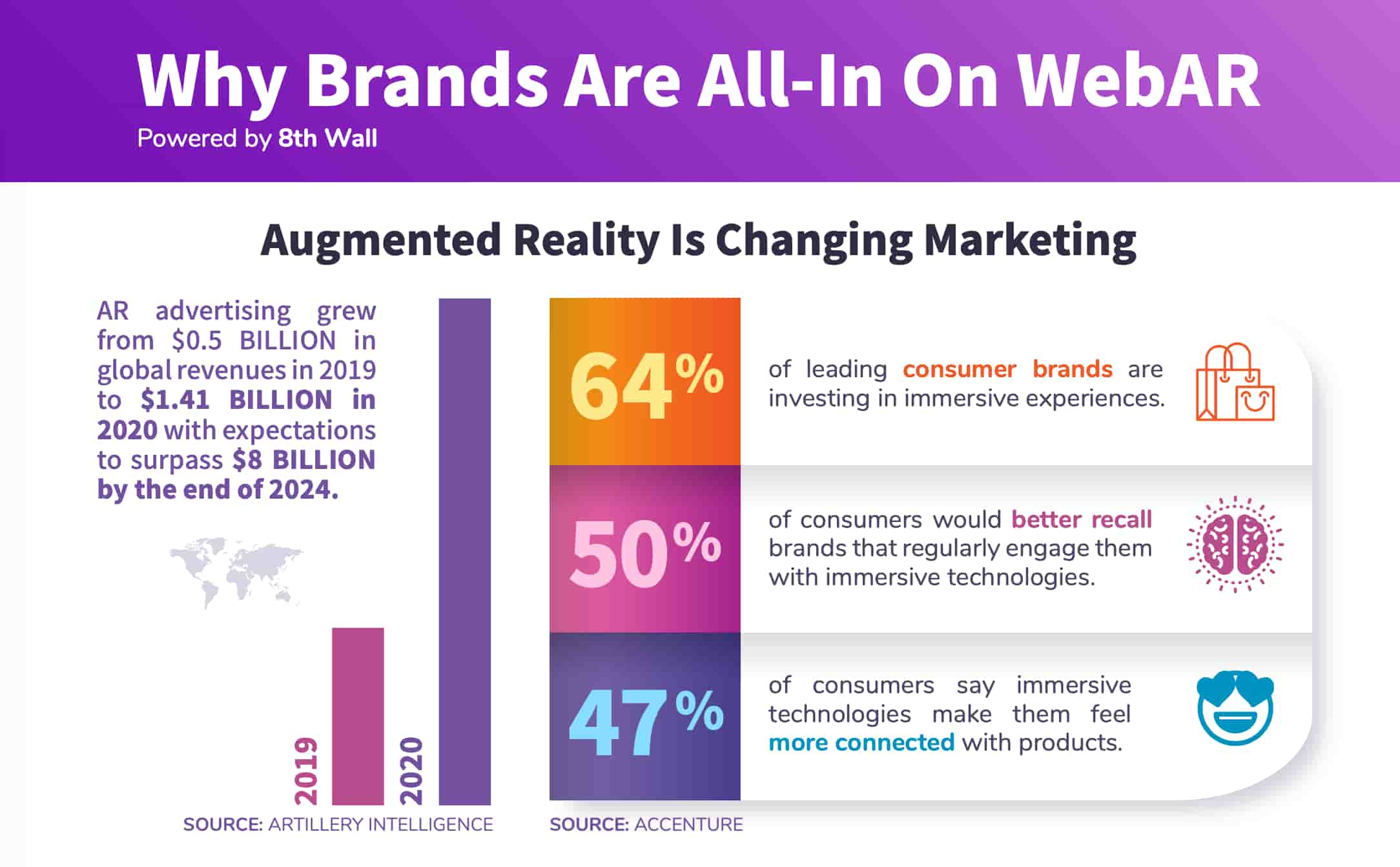
Web AR continues to elevate its value proposition to AR developers in search of the optimal vessel. As our research arm ARtillery Intelligence examined in a recent report, it now reaches 3.1 billion devices globally — the greatest of any mobile AR platform.
But as we’ve learned throughout the smartphone era and age of mobile apps, the addressable market represented in a hardware base doesn’t necessarily translate to usage volume. This applies to AR, as each mobile platform has varying installed bases and active user bases.
So that leads to the question of Web AR’s active usage. Does it correlate to the platform’s leading share of device compatibility? The answer is that it’s quickly gaining ground and catching up to the early and virally-fueled leaders in AR such as Snapchat and Facebook.
To back that up, web AR specialist and innovator 8th Wall recently sent us data that indicate that the emerging AR modality continues to ratchet up in market traction. That goes for user engagement, and the adoption and effectiveness of brand marketers (where the money is).
Proof Points
Drilling down, 8th Wall highlights web AR campaigns with various performance indicators such as campaign reach, engagement depth and revenue lifts — indicating variety and versatility. Speaking of variety, it’s also evident that a wide range of brands and verticals are adopting AR.
– Brazilian bank Bradesco ran a TV spot for its web AR experience during the semifinale of The Voice Brasil. Within the first 5 minutes, 250,000 users experienced it.
– Speaking of banks, Russia’s largest bank Sberbank ran a web AR promotion that resulted in more than one-million user sessions, 94 percent of which shared the experience with a friend.
— New York fashion brand KHAITE’S web AR campaign led to a 400 percent increase in sales and increased customer engagement time by more than 4 minutes.
– Sony Pictures’ Jumanji: The Next Level web AR promotion resulted in consumers spending over 5 minutes in AR. The campaign was produced in partnership with Trigger.
– Saatchi Art launched a “View in My Room” feature that let users view more than 1 million works of art in your home before purchasing. Completed with the help of Rock Paper Reality, this makes it the world’s largest Web AR deployment according to 8th Wall.

Gaining Ground
Back to web AR’s leading installed base, this quantitative advantage was always countered with some qualitative disadvantages. In other words, web AR is outmatched in some areas of functionality by native app platforms such as ARkit and ARCore. But, it’s steadily gaining ground.
To that end, Web AR specialists like 8th Wall continue to push the boundaries of the platform’s capabilities. That includes its Release 17 where it introduced AR portals among other things; and its Release 16 that brought greater SLAM capabilities and frame rates.
And even without these advancements, Web AR’s relative deficiencies can still be factored in to create high-performing campaigns. As Rock Paper Reality’s Patrick Johnson asserts, it’s all about building experiences that are experientially meaningful, if not graphically intensive.
Bottom line: web AR continues to grow on quantitative and qualitative levels. 8th Wall’s ongoing work — and that of the brands and agencies that build things with it — continues to validate that growth. The result will be web AR’s continued ascension as a go-to vessel for augmentation.
“Web-based augmented reality has unlocked the AR opportunity for brands and marketers to engage consumers wherever they are with no app required to download,” 8th Wall founder & CEO Erik Murphy-Chutorian told AR Insider. “In turn, these meaningful and interactive AR experiences are achieving ROI across the marketing funnel from awareness and intent through to purchase.”

